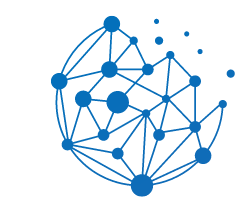INTRODUCTION
The rapid advance of technology being witnessed in the software industry today demands the consideration of what comes next. Topics such those about trends that will shake the digital landscape for the next few years are now hot among app developers and business leaders. It is important for those involved in technology-a developer, communication manager, entrepreneur, or business leader-to keep in touch with the very latest developments if they are to do any good with a competitive edge regarding innovation.
Artificial intelligence and machine learning have already become many interesting developments alongside cutting-edge possibilities being offered by quantum computing. These innovations have triggered disruption in industries, elevated user experience, and offered a number of chances for enterprises wanting to grow and adapt. The multiplier question then arises-how the enthralling nature of these technologies shapes the very course of software development, delivery, and experience itself.
The aspects that we shall look into in the blog will be software technology trends that are transforming routers into the directional metaphor for the future as to how they operate, their importance, and their future prospects. .Whether you are curious about edge computing, transformative Internet of Things (IoT), or cutting-edge blockchain, we are going to cover all these subjects. To examine the utilized current technologies defining the software industry, find ways to help achieve your business goals, improve procedures, and create digital innovations. You’re ready to venture into software technology parlor? Let’s take the plunge.
Emerging Trends in Software Technology
The technology landscape in the software industry is constantly changing, and much of that change comes down to new and emerging technologies. Whether it’s Artificial Intelligence (AI), Quantum Computing, or Blockchain that piques your interest, it’s vital for everyone in tech to stay abreast of the cutting-edge trends that are shaping how we build, use, and interact with software. So, what are some of the key trends shaping the way the software industry will look in the years to come, and why should you care? Here is where we’ll explore the latest and most exciting developments in the software technology space, from tracking the emerging trends to finding out how you can capitalize on them for your own business or project.
1. Artificial Intelligence (AI) and Machine Learning (ML)
AI and Machine Learning (ML) have made a big impact on the software industry in recent years, but it doesn’t stop there. These technologies have made such a splash that they were once thought of as technological or sci-fi concepts, yet they continue to change the way we live our lives and get our information. Key concepts What is AI and ML? Artificial Intelligence (AI) also refers to a system designed to learn by imitation from human activity. What is Machine Learning (ML)? Artificial intelligence in which a model learns from patterns and characteristics inherent in data and then fine-tunes algorithms to better predict future events. Why Does It Matter? These two technologies help make software more intelligent and dynamic. For example, AI has been used to power chatbots that provide 24/7 customer service while also delivering advanced data analytics that can be used in predicting customer behavior. ML lets software learn from the data it’s been fed, and that means it can be used to make applications faster, more efficient, and more responsive. Key benefits Smarter automated decision-making Automating repetitive or boring tasks and freeing human workers to do more critical thinking. Enabling ML-powered features such as Netflix’s recommendation engine. Personalized user experiences.

2. Quantum Computing
The Final Frontier You’ve probably heard of quantum computers, which can solve complex problems that are technically impossible for classical computers, but are they really so far-fetched?
What is Quantum Computing-Quantum computers use quantum-mechanical principles to process data at rates of speed far exceeding what classical computers can achieve.
What can they do for me? Quantum Computing allows scientists to solve problems in cyber- and SSL encryption, computer-aided design, cancer research and military development, essentially trying to solve problems and tasks that are too complex for the rest of us.

3. Block Chain: Decentralizing Software
Blockchain is more than the technology used in cryptocurrencies. It is originally meant as a way to conduct transactions and securely store data in a decentralized way.

What is Blockchain?
It is an open and secure method of transaction processing. It can be broadly defined as a distributed ledger system that offers a unique copy of transaction information on the servers and allows it to be verified independently of a single authority.
How Is It Affecting Software?
Blockchain has thrown up vast possibilities when it comes to developing secure and transparent software applications. From smart contracts to data integrity guarantee along the supply chain, blockchain is bringing ringing transformative changes into industries from finance to healthcare and beyond.
The key benefits include:
- Greater security and transparency
- No chance of fraud and errors
- Provides its utility in Smart Contract Automation
4. Internet of Things (IoT) and 5G: Connecting Everything
The all-encompassing Internet of Things (IoT)-a network of heterogeneous devices that communicate, share data, and invariably talk unaware of other nodes-in conjunction with the tremendous power of 5G, you can realize the potential for changes of infinite magnitude.

What Is IoT and 5G?
Internet of Things(IoT) technologies enable connection and data communication. 5G communication enables connectivity in real-time with lower latency and a faster speeds.
How Does This Influence Software?
With built-in IoT applications and architectures, future software evolution will likely aid in the rapid flow of vast data streams from mobile devices, which will move further ahead, enabled by 5G, therefore introducing a new world of innovation possibilities in the domains of healthcare, manufacturing, and smart cities.
• Applications to Explore
- Smart homes and cities
- Real-time health monitoring
- Automated and semi-automated vehicles
5. Edge Computing- Bringing Data Closer to You
As cloud computing itself grows increasingly capable, another trend is emerging-edge computing. Edge computing works by bringing data processing closer to where the data is created rather than relying on a remote central cloud server. This data processing may occur on local servers or even on the devices themselves.

What is Edge Computing?
Edge computing is the concept that provides data processing closer to the source, thus minimizing latency. In contrast to the distant data center, edge computing allows for faster analysis and more immediate response.
importance of Edge Computing
With high number of connected devices and the demand for real-time data processing, Edge Computing improves performance and reduces the load on centralized servers.
Key Benefits
- Faster processing and lower latency
- Enhanced reliability for time-sensitive applications
- A more band-efficient use of bandwidth
By taking note of the trends that will become dominant, businesses position themselves to be ahead of the parade; they will keep innovating ways of transforming their business and software forms. As you familiarize yourself with these technologies, consider how they might benefit your business in meeting long-term ROI and digital transformation goals. The next chapter will detail the development tools and methodologies that may shape the future of software.
CONCLUSION:
New technological capabilities are rebuilding the software industry. The great potential for Artificial Intelligence and Machine Learning, only to mention two examples together with Quantum Computing and continuing expansion of the attached 5G technology, opens a splendid bright horizon for innovation,If you are either a developer or a business leader or perhaps someone interested in the world of technology, to survive the competition, you should keep pace with these trends. Just look the opportunities that could arise from incorporating AI into products, optimizing data infrastructures with Edge Computing, or allowing Blockchain to create secure, decentralized applications. Such technological innovation is not just their preserve- it is universally available and tremendously disruptive.
Where to from here? Begin by exploring how these innovations will work hand-in-hand with your business objectives. The future of software shines bright-if cloud technologies, DevOps and IoT allow you to quickly and easily adapt, it’s definitely technology for transformation. Maintain a forward-looking stance, try out new tech, and continue moving toward the goal of digital transformation.
This is the fast-moving world of software, and the one way to quell this pace of change is through the incessant cycle of learning and innovation. Be ready to receive the charge of welcoming change into the next era of technology?




